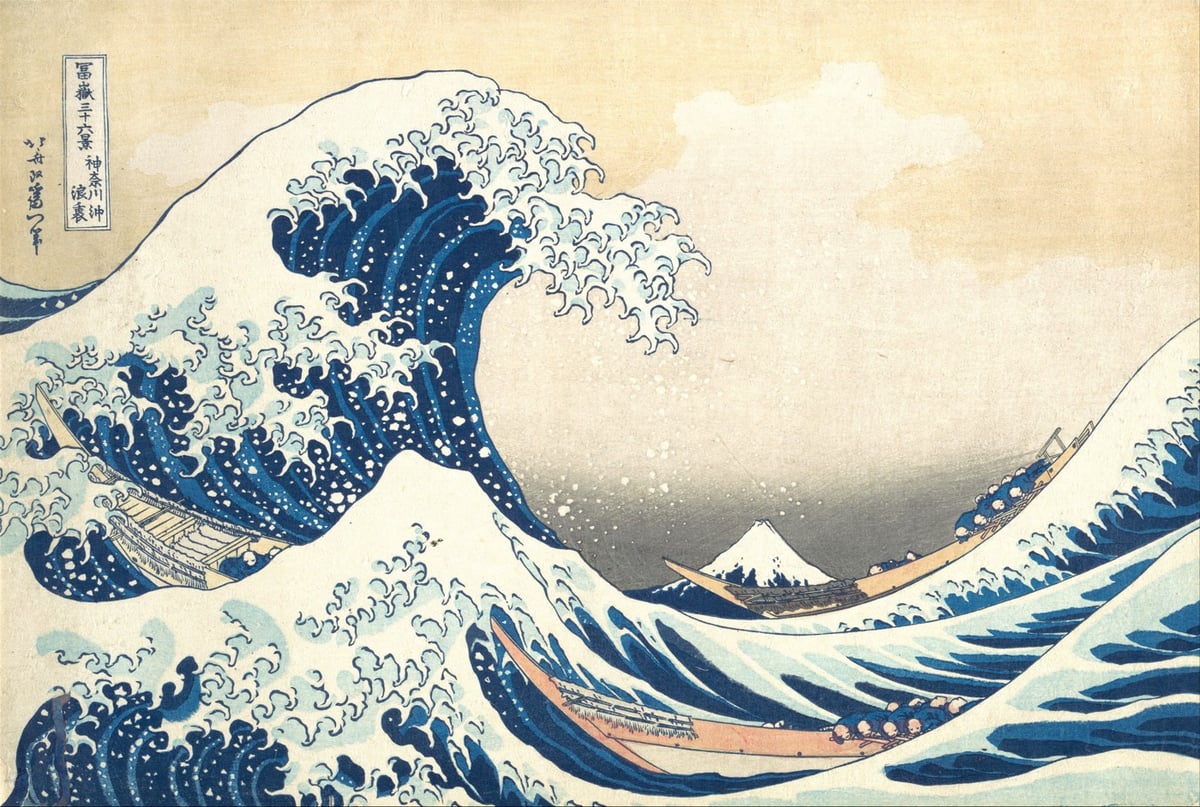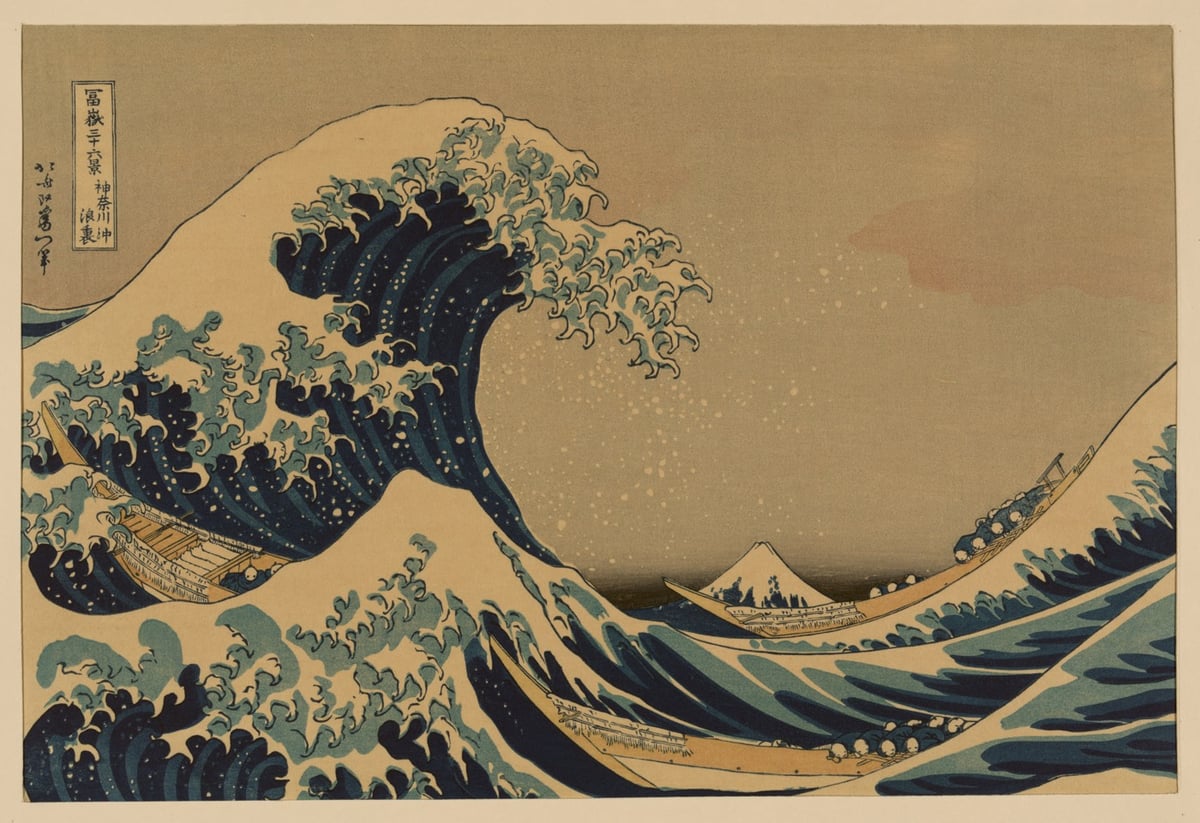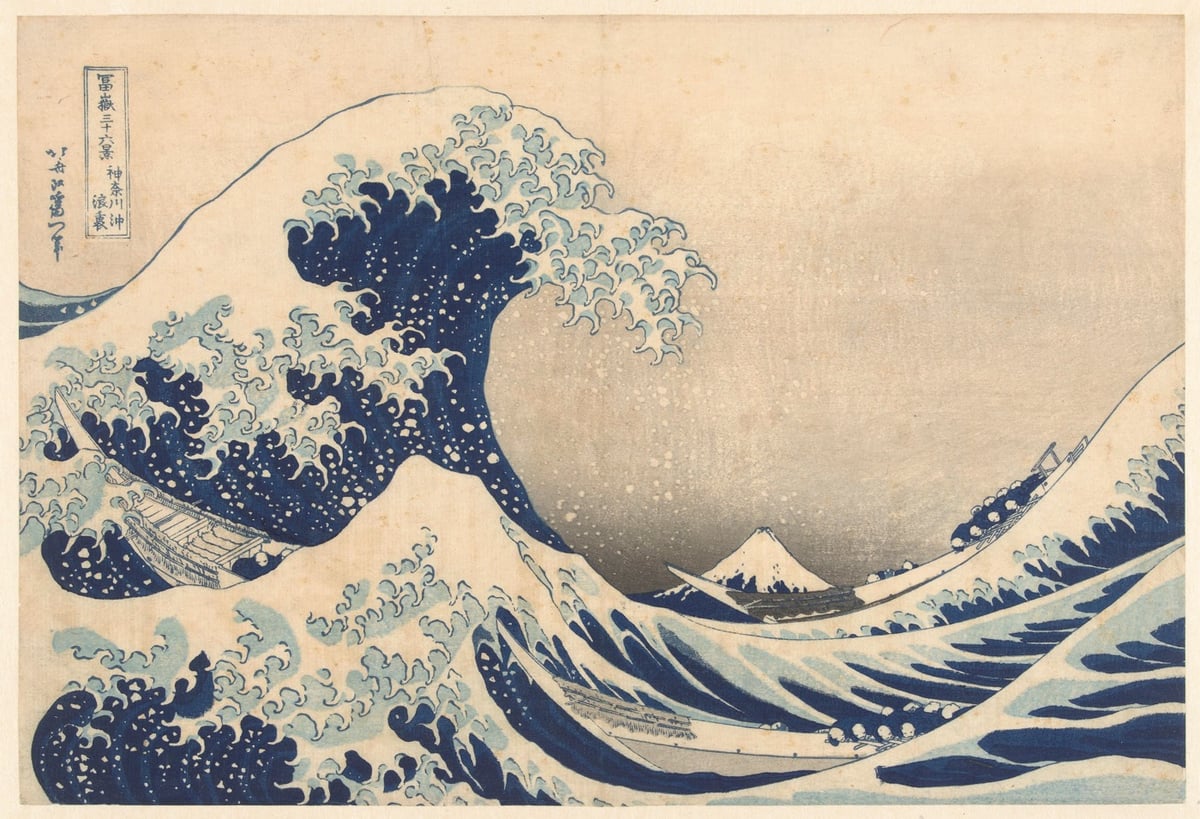The Great Wave by Katsushika Hokusai



One of the world’s great art masterpieces is Katsushika Hokusai’s woodblock print Kanagawa oki nami ura, popularly known as The Great Wave. Thousands of prints were made and some of the surviving copies made their way into museums & private collections. I’ve selected three of the highest resolution prints available for free download (from top to bottom):
Metropolitan Museum of Art (10 megapixels)
Library of Congress (51 megapixels)
Rijksmuseum (22 megapixels)
You can find many other versions using the Ukiyo-e Search site.
Douglas McCarthy recently wrote about The Great Wave and the various ways that museums choose to offer digital copies on their websites.
If we consider the customer journey of acquiring a digital image of ‘The Great Wave’ from our fourteen museums, a definite trend emerges — the more open the policy of a museum is, the easier it is to obtain its pictures.
Like the other open access institutions in our sample group, The Art Institute of Chicago’s collections website makes the process incredibly simple: clicking once on the download icon triggers the download of a high-resolution image.
In contrast, undertaking the same process on the British Museum’s website entails mandatory user registration and the submission of personal data.
(via @john_overholt)
Update: A few years ago, woodblock printmaker David Bull documented the process of making prints of The Great Wave in this great series of videos. Part of his process included a fascinating investigation of previous prints and trying to determine which of the many prints might be printed by the original printer. He shares bits and pieces of that investigation in the first three videos and also the eighth & tenth videos, in which he zeroes in on two candidates for original prints (the one at the Met shown above and the British Museum print) and concludes, controversially I would think, that one (and possibly both) of these prints was made as a knock-off, a forgery. After watching Bull’s explanation, it’s not at all difficult to think that perhaps very few prints made from the original blocks by the original printer exist today. (via @gregalor)





Stay Connected